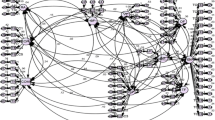Abstract
Mobile business intelligence (BI) enables the mobile workforce to attain knowledge by providing access to information assets anytime anywhere. Mobile BI’s main aim is to support decision-makers during the decision making processes. In decision situations many issues may be relevant, but it is impossible for decision-makers to attend to all of them as decision-makers are constrained by their limited capacity of attention. This paper uses the attention-based view theory to explore mobile BI and discuss its implications in terms of decision-makers’ attention and design process. The results of this study are based on analyses of published material, e.g. trade press and white papers, and semi-structured interviews with important stakeholders in the mobile BI field. This paper shows that the access to issues and answers anytime anywhere via mobile BI and its alerting capabilities affect the focus of attention of the decision-makers. The stakeholders should be actively involved in the design process so that the efficiency and effectiveness of mobile BI in the distribution of the decision-makers’ attention will be enhanced.
Access this chapter
Tax calculation will be finalised at checkout
Purchases are for personal use only
Similar content being viewed by others
References
Humphreys PC (1998) Discourses underpinning decision support. In: Berkeley D, Widmeyer G, Brezillon P, Rajkovič V (eds) Context-sensitive decision support systems. Chapman & Hall, London
Stabell CB (1987) Decision support systems: alternative perspectives and schools. Decis Support Syst 3:243–251
Carlsson SA (2008) An attention-based view on DSS. Encyclopedia of decision making and decision support technologies. IGI Global, Hershey
Arnott D, Pervan G (2008) Eight key issues for the decision support systems discipline. Decis Support Syst 44(3):657–672
Negash S, Gray P (2008) Business intelligence. In: Burstein F, Holsapple C (eds) Handbook on decision support systems 2. Springer, Berlin Heidelberg
Cowie J, Burstein F (2007) Quality of data model for supporting mobile decision making. Decis Support Syst 43(4):1675–1683
Hosack B, Hall D, Paradice D, Courtney J (2012) A look toward the future: decision support systems research is alive and well. J Assoc Inform Syst 13(5):3
O’donnell P, Sipsma S, Carolyn W (2012) The “Hot” Issues in Business Intelligence: The View of Practitioners. In: Respício A, Burstein F. (eds.) Fusing Decision Support Systems into the Fabric of the Context. Amsterdam: IOS Press
Simon H (1947) Administrative behaviour. Macmillan, New York
Ocasio W (1997) Towards an attention-based view of the firm. Strat Manag J 18(Summer special issue):187–206
Simons R (1995) Levers of control: how managers use innovative control systems to drive strategic renewal. Harvard Business School Press, Boston
Simon H (1997) Designing organizations for an information-rich world. In: Lamberton DM (ed) The economics of communication and information. Edward Elgar, Cheltenham
Creswell JW (2007) Qualitative inquiry & research design: choosing among five approaches. SAGE Publications, Thousand Oaks
Krippendorff K (2012) Content analysis: an introduction to its methodology. SAGE Publications, Thousand Oaks
Miles MB, Huberman AM (1994) Qualitative data analysis: an expanded sourcebook. SAGE Publications, Thousand Oaks
Yuan Y, Archer N, Connelly CE, Zheng W (2010) Identifying the ideal fit between mobile work and mobile work support. Inform Manag 47(3):125–137
Pabbisetty M (2010) Mobile BI: raising the IQ of the enterprise, one device at a time. Saama white paper
Gentile B (2011) Taking intel to the pineapple fields [online]. http://www.channelweb.co.uk/crn-uk/opinion/2118696/taking-intel-pineapplefields. http://www.chainstoreage.com/article/focus-business-intelligence Accessed Feb 2013
Amato-Mccoy D (2012) Focus on: business intelligence. Store managers harness big data with mobile apps. Chain store age—news and analyses for retail executives, Accessed June, 2013 http://www.chainstoreage.com/article/focus-business-intelligence
Gebauer J, Shaw MJ (2004) Success factors and impacts of mobile business applications: results from a mobile e-procurement study. Int J Electron Commerce 8(3):19–41
Holsapple CW, Sena MP (2005) ERP plans and decision-support benefits. Decis Support Syst 38(4):575–590
Pickett M (2006) Lincoln financial distributor implements mobile, real- time business intelligence. DM review
Carlsson SA, Tona O (2012) Using business intelligence to prevent and solve crime in Wallander land. J Decis Syst 21(3):217–230
Dahlbom B, Ljungberg F (1998) Mobile informatics. Scand J Inform Syst 10(1):227–234
Andersson B (2011) Harnessing handheld computing—managing is support to the digital ranger with defensive design. In: Jain H, Sinha A, Vitharana P (eds) Service-oriented perspectives in design science research. Springer, Berlin
Mayer JH, Weitzel T (2012) Appropriate interface designs for mobile end-user devices—up close and personalized executive information systems as an example. 45th Hawaii International Conference on System Science (HICSS)
Author information
Authors and Affiliations
Corresponding author
Editor information
Editors and Affiliations
Rights and permissions
Copyright information
© 2014 Springer International Publishing Switzerland
About this paper
Cite this paper
Tona, O., Carlsson, S.A. (2014). Affecting Decision-Makers’ Attention through Mobile BI: Implications for Mobile BI Design Process. In: José Escalona, M., Aragón, G., Linger, H., Lang, M., Barry, C., Schneider, C. (eds) Information System Development. Springer, Cham. https://doi.org/10.1007/978-3-319-07215-9_34
Download citation
DOI: https://doi.org/10.1007/978-3-319-07215-9_34
Published:
Publisher Name: Springer, Cham
Print ISBN: 978-3-319-07214-2
Online ISBN: 978-3-319-07215-9
eBook Packages: Computer ScienceComputer Science (R0)




